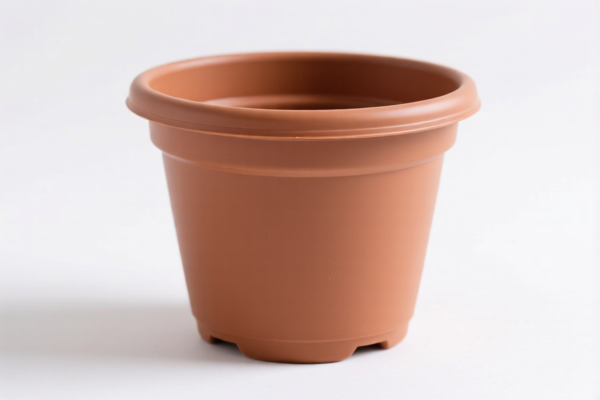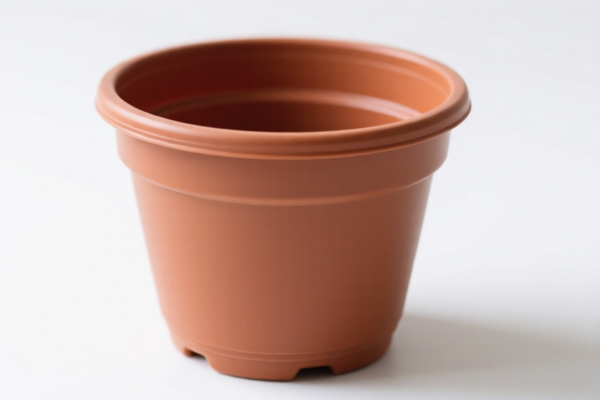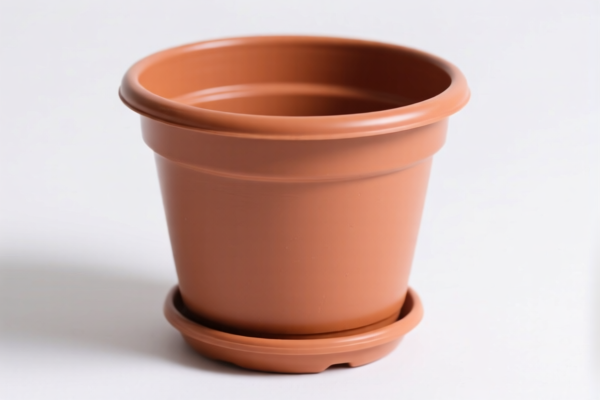| HS Code | Official Doc | Tariff Rate | Origin | Destination | Effective Date |
|---|---|---|---|---|---|
| 3926901000 | Doc | 40.9% | CN | US | 2025-05-12 |
| 3926909905 | Doc | 42.8% | CN | US | 2025-05-12 |
| 3925900000 | Doc | 60.3% | CN | US | 2025-05-12 |
| 6702102000 | Doc | 38.4% | CN | US | 2025-05-12 |
| 6702104000 | Doc | 33.4% | CN | US | 2025-05-12 |




Plastic Plant Pots
Plastic plant pots are containers used for growing plants. They are a common alternative to terracotta, ceramic, or metal pots, particularly for indoor and outdoor gardening.
Material
These pots are manufactured from various types of plastic, including:
- Polypropylene (PP): Lightweight, durable, and relatively inexpensive. Commonly used for disposable or low-cost pots.
- Polyethylene (PE): Flexible and impact-resistant, often used for nursery pots and flexible containers.
- High-Density Polyethylene (HDPE): More rigid and durable than standard PE, suitable for larger pots and long-term use.
- PVC: Less common due to environmental concerns, but can be found in some applications.
- Recycled Plastic: Increasingly common, offering an environmentally friendly option.
Purpose
The primary purpose of plastic plant pots is to provide a contained environment for root development and growth. They facilitate:
- Portability: Easier to move plants between locations.
- Controlled Growing Medium: Allows for specific soil mixes tailored to plant needs.
- Protection: Shields roots from extreme temperatures and physical damage.
- Water Retention: Some plastic types help retain moisture, reducing watering frequency.
Function
Plastic plant pots function by:
- Containing the Root System: Providing a defined space for root growth.
- Drainage: Most pots feature drainage holes to prevent waterlogging, which can lead to root rot.
- Aeration: Allowing air to reach the roots.
- Support: Providing physical support for the plant.
Usage Scenarios
Plastic plant pots are used in a wide range of gardening applications:
- Indoor Gardening: Suitable for houseplants, herbs, and starting seeds.
- Outdoor Gardening: Used for flowers, vegetables, shrubs, and trees.
- Nursery Production: Widely used in commercial nurseries for propagating and growing plants.
- Hydroponics: Certain types of plastic pots are designed for hydroponic systems.
- Balcony and Patio Gardening: Ideal for small spaces.
Common Types
- Nursery Pots: Typically black or dark-colored, inexpensive, and designed for temporary use. Often used for starting seedlings or transplanting plants.
- Decorative Pots: Available in a wide variety of shapes, colors, and sizes. Often used for indoor plants and outdoor displays.
- Self-Watering Pots: Feature a reservoir that provides water to the plant roots as needed.
- Hanging Baskets: Designed to be suspended from ceilings or brackets.
- Square/Rectangular Pots: Space-efficient designs for patios and balconies.
- Cachepots: Decorative outer containers without drainage holes, used to hold nursery pots.
- Geotextile Pots (Smart Pots): Fabric pots made from breathable fabric, promoting air pruning of roots.
Plastic plant pots fall under articles of plastics, commonly used for horticulture and gardening. Here are the relevant HS codes based on the provided information:
- 3926901000: This HS code covers “Other articles of plastics and articles of other materials of headings 3901 to 3914: Other: Buckets and pails”. While not specifically plant pots, small plastic plant pots could be classified under this code as they share similar characteristics with buckets and pails – being containers made of plastic. The total tax rate is 40.9%, comprised of a 3.4% base tariff, a 7.5% additional tariff, and a 30.0% additional tariff effective April 2, 2025.
- 3926909905: This HS code covers “Other articles of plastics and articles of other materials of headings 3901 to 3914: Other: Other Elastic bands made wholly of plastics”. This code is less directly applicable to plant pots, as it specifically refers to elastic bands. However, if the plant pots incorporate elastic elements, this code might be considered. The total tax rate is 42.8%, consisting of a 5.3% base tariff, a 7.5% additional tariff, and a 30.0% additional tariff effective April 2, 2025.
- 3925900000: This HS code covers “Builders' ware of plastics, not elsewhere specified or included: Other”. Plant pots could be considered builders' ware if used in landscaping or garden construction. The total tax rate is 60.3%, consisting of a 5.3% base tariff, a 25.0% additional tariff, and a 30.0% additional tariff effective April 2, 2025.
It is important to note that the classification of plastic plant pots may depend on their specific characteristics and intended use.
Regarding HS code 3925900000, please note the need to verify the specific application of the plant pots and whether they qualify as “builders’ ware”.
Customer Reviews
No reviews yet.